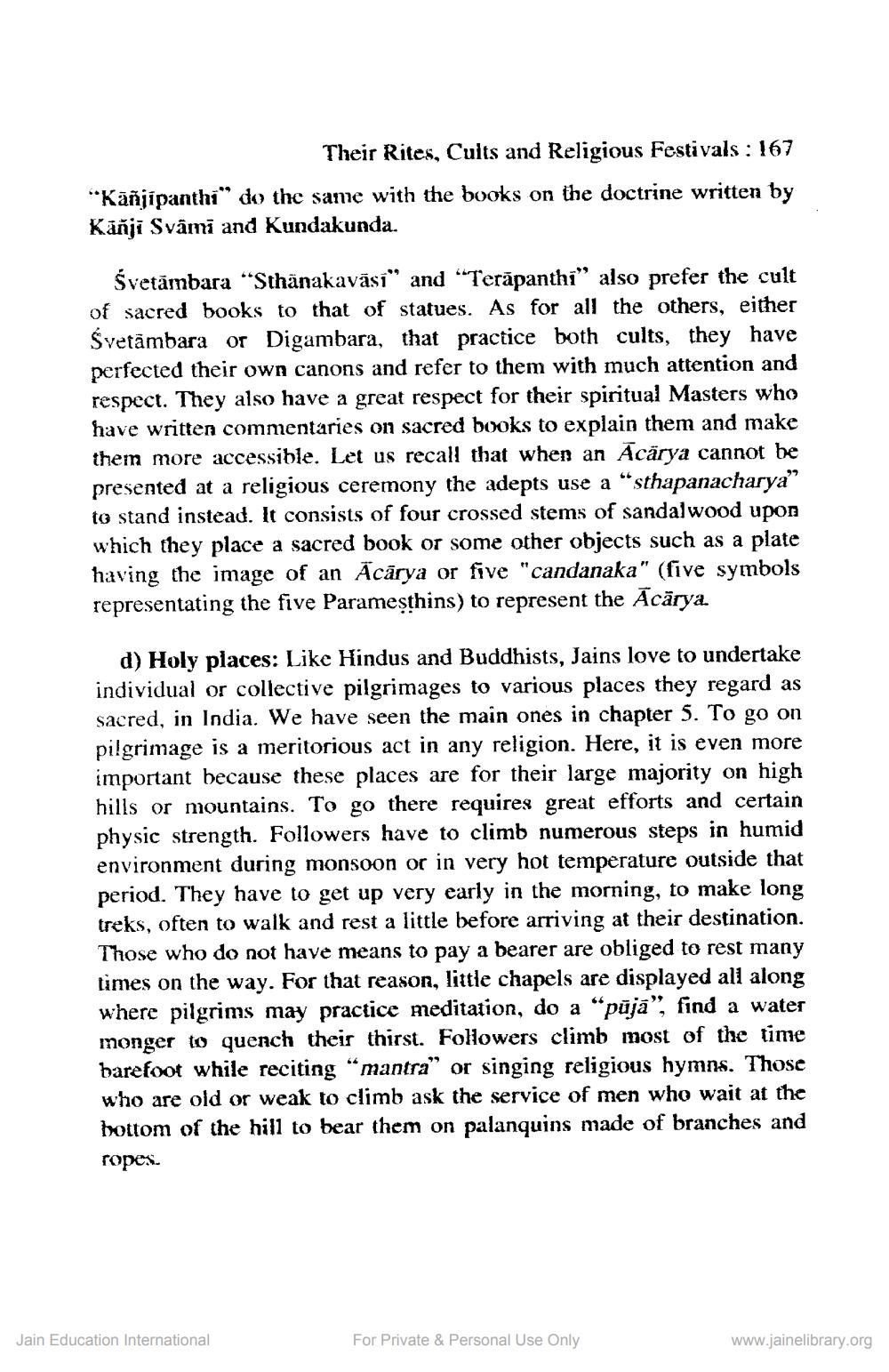________________
Their Rites, Cults and Religious Festivals: 167 "Kāñjipanthi" do the same with the books on the doctrine written by Kanji Svāmi and Kundakunda.
Śvetämbara "Sthanakavāsī" and "Terapanthi" also prefer the cult of sacred books to that of statues. As for all the others, either Śvetämbara or Digambara, that practice both cults, they have perfected their own canons and refer to them with much attention and respect. They also have a great respect for their spiritual Masters who have written commentaries on sacred books to explain them and make them more accessible. Let us recall that when an Acarya cannot be presented at a religious ceremony the adepts use a "sthapanacharya" to stand instead. It consists of four crossed stems of sandalwood upon which they place a sacred book or some other objects such as a plate having the image of an Acarya or five "candanaka" (five symbols representating the five Paramesthins) to represent the Acarya.
d) Holy places: Like Hindus and Buddhists, Jains love to undertake individual or collective pilgrimages to various places they regard as sacred, in India. We have seen the main ones in chapter 5. To go on pilgrimage is a meritorious act in any religion. Here, it is even more important because these places are for their large majority on high hills or mountains. To go there requires great efforts and certain physic strength. Followers have to climb numerous steps in humid environment during monsoon or in very hot temperature outside that period. They have to get up very early in the morning, to make long treks, often to walk and rest a little before arriving at their destination. Those who do not have means to pay a bearer are obliged to rest many times on the way. For that reason, little chapels are displayed all along where pilgrims may practice meditation, do a “pūjā”, find a water monger to quench their thirst. Followers climb most of the time barefoot while reciting "mantra" or singing religious hymns. Those who are old or weak to climb ask the service of men who wait at the bottom of the hill to bear them on palanquins made of branches and
ropes.
Jain Education International
For Private & Personal Use Only
www.jainelibrary.org




